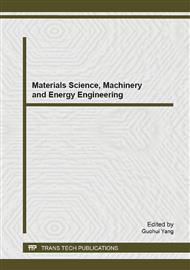p.641
p.646
p.652
p.663
p.668
p.674
p.680
p.686
p.693
Virtual Learning Technology and Materials in Malaysian Higher Education
Abstract:
This study has been developed to explore the usage of virtual learning materials and its system on students experience in higher education (HE). Most virtual learning literatures were well documented in the developed country context but little in the Malaysia HE. In this study, 15 students and a prominent professor from public university were interviewed to seek their views on virtual learning between May to June, 2013. This qualitative approach identifies better knowledge sharing, cost reduction and productivity as the main benefits of using virtual learning technologies. However, the findings can only be deduced by quantitative research, comprising of larger sample size of students from local and private HE Institutions (HEIs), and seeking their views of virtual learning on usefulness and acceptance towards education satisfaction and loyalty. Hence, a conceptual model was derived for this preliminary study.
Info:
Periodical:
Pages:
693-697
Citation:
Online since:
December 2013
Authors:
Keywords:
Price:
Сopyright:
© 2014 Trans Tech Publications Ltd. All Rights Reserved
Share:
Citation:


